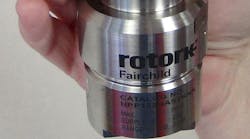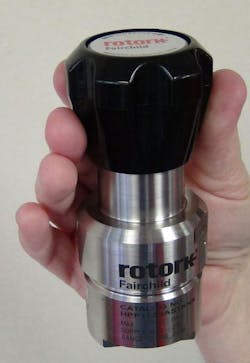The new HPP (High-pressure piston) range of leak-free pneumatic regulators is designed for instrument and industrial control applications. The regulator’s piston design manages supply pressures up to 6,000 psi at temperatures up to 260°C and delivers pressures between 3,000 and 1,000 psi.
The HPP is constructed of 316 stainless steel and feature improved valve seat sealing to eliminate the risk of media leakage associated with conventional high-pressure regulators.
The units are available with 6-mm (¼-in.) ports in either two or four- port configurations and in multiple output pressure ranges. Standard knobs can be replaced with tamperproof caps for high-temperature and/or nonadjustment applications.
The regulators mount at the ports, the bottom surface, or in panel-mounted configurations.
Rotork Fairchild, (800) 334-8422


